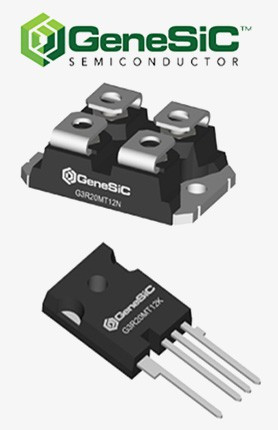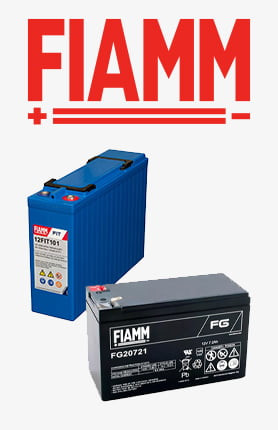Vous devez être connecté
-
revenirX
-
Composants
-
-
Category
-
Semi-conducteurs
- La diode
- Les thyristors
- Modules de puissance isolés
- Ponts redresseurs
-
Transistors
- Transistors | GeneSiC
- Modules MOSFET SiC | Mitsubishi
- Modules MOSFET SiC | STARPOWER
- Modules MOSFET SiC ABB
- Modules IGBT | MITSUBISHI
- Modules de transistors | MITSUBISHI
- Modules MOSFET | MITSUBISHI
- Modules de transistors | ABB
- Modules IGBT | POWEREX
- Modules IGBT | INFINEON (EUPEC)
- Composants semiconducteurs en carbure de silicium
- Aller à la sous-catégorie
- Circuits de commande
- Blocs de puissance
- Aller à la sous-catégorie
- Transducteurs électriques
-
Composants passifs (condensateurs, résistances, fusibles, filtres)
- Résistances
-
Fusibles
- Fusibles miniatures pour c.imp. série ABC et AGC
- Fusible rapides tubulaires
- Cartouches de courbe GL/GG et AM
- Cartouches ultrarapides
- Fusibles à action rapide (norme britannique et américaine)
- Fusibles à action rapide (norme européenne)
- Fusibles de traction
- Cartouche de haute tension
- Aller à la sous-catégorie
-
Condensateurs
- Condensateurs pour moteurs
- Condensateurs électrolitiques
- Condensateurs de type snubbers
- Condensateurs de puissance
- Condensateurs pour circuits continus
- Condensateurs de compensation de puissance
- Condensateurs de haute tension
- Condensateurs pour chauffage par induction
- Condensateurs pour impulsions
- Condensateurs DC LINK
- Condensateurs pour circuits AC/DC
- Aller à la sous-catégorie
- Filtres anti-interférences
- Supercondensateurs
-
Protection contre les surtensions
- Protection contre les surtensions pour les applications coaxiales
- Protection contre les surtensions pour les systèmes de vidéosurveillance
- Parafoudres de ligne électrique
- Protection contre surtensions pour LED
- Parafoudres pour le photovoltaïque
- Protection du système de pesage
- Protection contre les surtensions pour bus de terrain
- Aller à la sous-catégorie
- Aller à la sous-catégorie
-
Relais et contacteurs
- Théorie relais et contacteurs
- Relais statiques triphasés
- Relais statiques CC
- Régulateurs, circuits de commande et accessoires
- Démarrages progressifs et contacteurs inverseurs
- Relais electromécaniques
- Contacteurs
- Commutateurs rotatifs
-
Relais statiques monophasés
- Relais semi-conducteurs AC monophasés, série 1 | D2425 | D2450
- Relais à semi-conducteurs CA monophasés, séries CWA et CWD
- Relais à semi-conducteurs CA monophasés des séries CMRA et CMRD
- Relais à semi-conducteurs CA monophasés, série PS
- Relais semi-conducteurs AC double et quadruple, série D24 D, TD24 Q, H12D48 D
- Relais statiques monophasés, série GN
- Relais à semi-conducteurs CA monophasés, série CKR
- Relais AC monophasés SÉRIES ERDA ET ERAA pour rail DIN
- Relais CA monophasés pour courant 150A
- Relais à semi-conducteurs doubles intégrés à un dissipateur thermique pour un rail DIN
- Aller à la sous-catégorie
- Relais statiques monophasé pour c.imp.
- Relais d'interface
- Aller à la sous-catégorie
- Composants inductifs
- Radiateurs, varistances, protections thermiques
- Ventilateurs
- Climatiseurs et accessoires d'armoires électriques
-
Batteries, chargeurs, blocs d'alimentation tampon et onduleurs
- Batteries et Chargeurs - théorie
- Batteries Li-ion et non-standards. Systèmes de gestion des batteries (BMS)
- Batteries
- Chargeurs de batteries et accessoires
- Alimentation de secours UPS et alimentation tampon
- Convertisseurs de tension et accessoires pour photovoltaïque
- Stockage d'Energie
- Réservoirs de carburant
- Batteries lithium-ion
- Aller à la sous-catégorie
-
Automatique industrielle
- Futaba Drone Parts
- Interrupteurs de fin de course, micro-rupteurs
- Capteurs et convertisseurs
- Pyromètres
- Compteurs, Relais temporisés, Indicateurs de tableau
- Appareils industriels de protection
- Signalisation lumineuse et sonore
- Caméra thermique
- Afficheurs à LED
- Boutons et commutateurs
-
Enregistreurs
- Enregistreur de température à bande et afficheur numérique - AL3000
- Enregistreurs à microprocesseur avec ecran LCD série KR2000
- Enregistreur KR5000
- Indicateur avec fonction enregistrement de température et humidité HN-CH
- Matériaux consommables pour enregistreurs
- Enregistreur graphique compact 71VR1
- Enregistreur KR3000
- Enregistreur PC série R1M
- Enregistreur PC série R2M
- Enregistreur PC, 12 entrés isolées – RZMS
- Enregistreur PC, USB, 12 entrées isolées – RZUS
- Aller à la sous-catégorie
- Aller à la sous-catégorie
-
Câbles et chemins de câbles
- Fils
- Fils de Litz
- Câbles pour les applications spéciales
- Gaines
-
Tresses
- Tresses plates
- Tresses rondes
- Tresses très souples - plates
- Tresses très souples - rondes
- Tresses cuivre cylindriques
- Tresses cuivre cylindriques et protection
- Bandes de mise à la terre souples
- Tresses en acier zingué et inox
- Tresses isolantes en PVC - temp. 85°C
- Tresses plates en aluminium
- Kit de liaison - tresses et gaines
- Aller à la sous-catégorie
- Equipement pour la traction
- Cosses
- Barres flexible isolées
- Barre flexibles multicouches
- Systèmes de traçage des câbles
- Gaines annelées, tuyaux
- Aller à la sous-catégorie
- Voir toutes les catégories
-
Semi-conducteurs
-
-
- Fournisseurs
-
Applications
- Alimentations (UPS) et systèmes de redressement
- Automatisation HVAC
- Chauffage par induction
- Composants pour atmosphères potentiellement explosives (EX)
- Dispositifs de protection industriels
- Energy bank
- Équipements pour armoires de distribution, de contrôle et de télécommunications
- Impression
- L'automatisation industrielle
- L'automatisation industrielle
- Machines à souder et machines à souder
- Machines de séchage et de traitement du bois
- Machines pour le thermoformage des plastiques
- Machines-outils CNC
- Mesure et régulation de la température
- Mesure et régulation de la température
- Mines, métallurgie et fondation
- Moteurs et transformateurs
- Traction de tram et de chemin de fer
- Variateurs CA et CC (onduleurs)
-
Installation
-
-
Inducteurs
-
-
Appareils à induction
-
-
https://www.dacpol.eu/pl/naprawy-i-modernizacje
-
-
Service
-
- Contact
- Zobacz wszystkie kategorie
Measuring power and energy in electric circuits

Measuring power and energy in electric circuits
Power meters and network parameter analyzers are intended for identifying anomalies of power supply in single-phase or triple-phase networks. They enable power and energy analysis, and also quality control of electrical power. They can also be used for continuously recording measured values and identifying various occurring events. These tools are useful for applications in all industrial and individual sectors with different levels of preciseness and standards (e.g. in compliance with norms like IEC 61000, IEC 61010, EN 50160). The market of these devices is very broad.
Simple measurements
In the simplest versions of network analyzers are used in single-phase or triple-phase, triple-phase circuits or four-circuit with a possibility of data transmission through a communication interface (e.g. ModBUS, Ethernet) of all main characteristic values for electricity networks, including counting out active and passive energy (just like an electric energy meter). In some cases they have programmable alarms or impulse outputs for retransmission of parameters. Often the measurement of basic values (currents and voltages) is conducted with a sampling method, which allows for proper measurement of the true effective value (TRMS) even during deformed processes - being more and more common in modern electric installations.
Electrical disruptions monitoring
Two types of network disruptions should be monitored: permanent and occasional. The first ones can be observed through clamp multimeters with measurements of true effective value and oscilloscopes with differential inputs. In the case of occasional disruptions it is recommended to use network parameters analyzers. To detect recurring disruptions, it is common to measure true effective value with a multi function device or clamp multimeter and displaying the process of three phases by the usage of an oscilloscope with a differential input.
Electrical energy quality testing and problem-solving
On the market, two basic categories of energy quality analyzers are available: for verification of delivered voltage (with detection of harmonic and flicker light) and for solving problems. The first one is an effective statistical tool, but do not solve problems due to occasional disruptions. The second one provides long-term monitoring with automatic recording of current and voltage processes disrupted periods. The purpose of monitoring is to capture events which caused problems. Another, also important issue, is localization of network disruption analyzers. A good practice is to monitor the power supply system as the most sensitive equipment.
Analyzers are intended for solving problems, additionally to the continuous monitoring, generally providing additional functions such as network insulation from grounding (helpful with further increasing of the safety and cost level) and automatically identifying insulation errors (can occur during work). Increases the flexibility of the production workplace and minimizes outages.
Harmonic analysis
The usage of analyzers in installations is also useful for detection of effects of harmonic and undetermined states. Rapid change in the powering voltage process caused by a breakdown leads to values within limits of several thousand volts. Switching climaxes of power converters also cause intermittent effects. Low voltages, with which modern microelectronic devices work, make them more susceptible to disruptions in the power network. Apart from the effect on these electronic devices, these states can also cause disruptions in data or control systems. Another problem, considering a significant number of industrial and consumer devices working with rectifying systems, is the implementation of harmonic into public networks (distribution).
Vectorial analysis
Finally, we have to take into consideration precise devices verifying electric parameters and vector analysis of circuits (VNA). They are based on one of the main measuring methods applied in the sector of radio and microwave frequencies. These systems allow for analysis of active and passive components, such as filters, amplifiers, mixers and multiport modules.
Vector network analyzers are optimized in terms of high speed of measurement, using frequency scanning, thanks to which the results are acquired faster than while using a single source signal connected to the receiver, such as the spectrum analyzer. Thanks to the operation of calibration, vector network analyzers provide the highest level of preciseness while measuring elements of radio frequencies.
Author: Maciej Dumania – DACPOL
Articles similaires
 Now available – DC/DC converters from PREMIUM
Now available – DC/DC converters from PREMIUM
 New release in DACPOL lighting for lathes – Kira covers
New release in DACPOL lighting for lathes – Kira covers




Laissez un commentaire